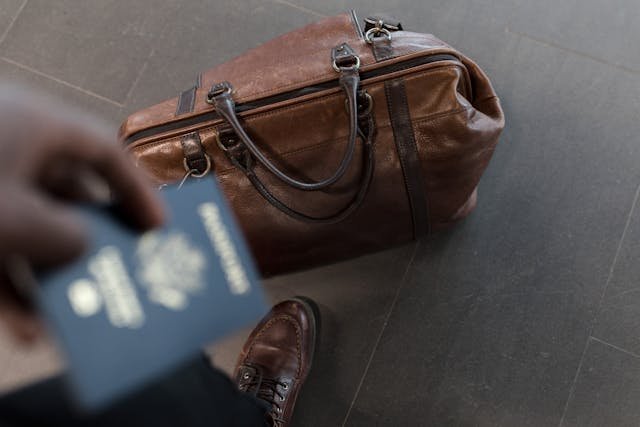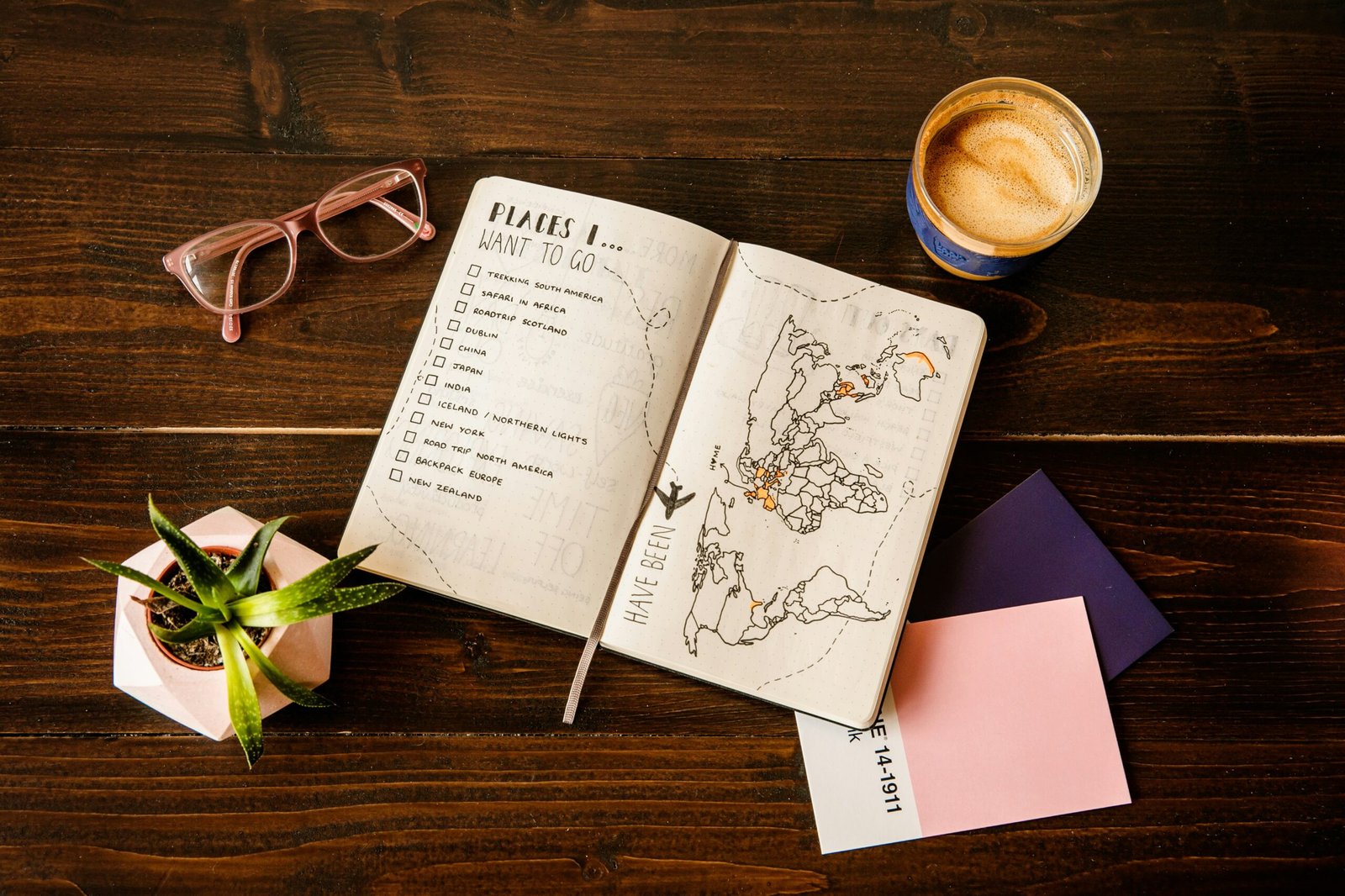Before embarking on a journey, it is crucial to conduct thorough research on your chosen destination. Understanding the local culture, customs, and language is essential for a seamless travel experience. Each locale possesses unique traditions and practices which can significantly influence your interactions with its residents. Familiarizing yourself with these aspects not only demonstrates respect but also enriches your understanding of the place you are visiting.
Language can be a major barrier for many travelers. While it may not be necessary to master the local language, learning a few key phrases can go a long way in enhancing communication with locals. Make use of language learning apps or online resources to acquire basic conversational skills, which can help in everyday situations, such as ordering food or asking for directions.
In addition to cultural knowledge, understanding the geography and climate of your destination is vital. This information can influence not only your packing choices but also your travel itinerary. By exploring maps and reading articles about the terrain, you can better anticipate travel times and the types of activities that may be available. Websites, travel blogs, and reputable travel guides can provide valuable insights and practical information regarding your destination’s geography and weather patterns.
Connecting with locals online can also enrich your travel experience. Engaging with communities on social media platforms or travel forums allows you to gather firsthand experiences and recommendations. These connections can lead to discovering hidden gems that may not be mentioned in popular tourist guides. Moreover, locals can provide insights regarding any cultural nuances that may be important to be aware of during your visit.
By prioritizing research on your destination, you equip yourself with the knowledge necessary to navigate unfamiliar territories with confidence and respect, ultimately making your journey more enjoyable and meaningful.
Packing Smartly for Your Trip
Packing efficiently is crucial for any traveler seeking to minimize stress and maximize space in their luggage. One of the first steps in smart packing is creating a comprehensive packing list. This ensures that all necessary items are accounted for, reducing the likelihood of forgetting essentials and promoting a more organized approach. A well-thought-out list aids in prioritizing items based on the length of the trip, planned activities, and the destination’s climate.
Selecting versatile clothing is key for a successful packing strategy. Opt for items that can be mixed and matched, allowing various outfits to be created from a limited number of pieces. Neutral colors and layers are particularly useful, as they adapt well to transitions between different weather conditions and occasions. Additionally, consider the materials of the clothing; breathable and quick-drying fabrics enhance comfort while reducing the chances of needing excessive pieces.
Packing for various weather scenarios is another important aspect. Always check the forecast prior to departure, and be prepared for unexpected changes. Packing a lightweight, waterproof jacket can prove invaluable, as well as including accessories like scarves and hats for temperature changes. This can help travelers remain comfortable without overpacking bulky items.
The use of travel-specific items, such as packing cubes and compression bags, can significantly improve packing organization and save space. Packing cubes help categorize clothing, making it easy to find items without unpacking the entire suitcase. Compression bags reduce the volume of clothing, allowing for more efficient utilization of space. Furthermore, packing a carry-on is advisable, especially in case of lost luggage. It ensures that essential items, such as toiletries, a change of clothes, and valuables, are readily available, providing peace of mind during travels.
Budgeting for Your Travels
Creating a travel budget is a crucial step for any savvy adventurer, as it ensures that your financial situation aligns with your travel aspirations. The first step in the budgeting process involves estimating the various expenses you may incur during your trip. This typically includes accommodation, food, transport, activities, and souvenirs. By setting a realistic budget based on your individual needs, you can avoid financial stress while experiencing the best your destination has to offer.
When considering accommodation costs, research different types of lodging options, such as hotels, hostels, or vacation rentals. Websites and travel apps can provide comparisons, helping you to find the best deals. Aim to allocate around 30% of your entire travel budget to accommodation, but adjust this percentage based on your travel preferences and destination. Food is another important aspect; estimating costs for meals can vary significantly from place to place. It may be wise to set aside approximately 20% of your budget for dining, including both casual and fine dining experiences.
Transport can also be a notable expense, especially when traveling between cities or countries. Investigate local transportation methods, such as public transit or ride-sharing services, to find the most economical options. It is beneficial to allocate about 15% of your budget for transport. Allocating around 25% for activities and experiences allows you to enjoy tours, attractions, or excursions that enrich your travels. Lastly, reserving a portion of your budget for souvenirs ensures you can bring home memories of your adventures without overspending.
To maximize your budget, utilize travel apps to track your expenses, convert currency efficiently, and seek out discounts or deals on local attractions and activities. Making the most of available resources can enhance your travel experience while allowing you to stick to your budget.
Health and Safety Considerations
Traveling exposes individuals to various health risks and safety concerns that are often overlooked during the excitement of planning a trip. Preparing for these challenges is essential for a rewarding travel experience. One of the primary health considerations is ensuring that travelers are up to date on necessary vaccinations. Depending on the destination, certain vaccines may be recommended or even required. Health agencies often provide guidelines on immunizations for diseases such as hepatitis A, typhoid, and yellow fever. Prior to departure, consulting with a healthcare provider familiar with travel medicine can assist in determining which vaccinations are necessary.
In addition to vaccinations, securing appropriate health insurance is crucial. Travelers should consider purchasing travel insurance that covers medical expenses, particularly if traveling to regions where healthcare services may be limited or require significant out-of-pocket costs. It is advisable to review policy coverage, ensuring it encompasses emergency medical evacuation and repatriation, should the need arise. Carrying a written copy of an insurance policy, along with a list of any prescribed medications, can facilitate quick access to necessary services in emergencies.
Staying healthy on the road requires vigilance around food and water safety. Opting for bottled water and being cautious with street food can minimize the risk of foodborne illnesses. Moreover, regular handwashing and the use of hand sanitizers can help reduce exposure to germs. Beyond health, personal safety is paramount. Travelers should keep their belongings secure by using anti-theft bags and remaining alert to their surroundings, especially in crowded areas.
Finally, knowing local emergency contacts, including the whereabouts of nearby hospitals and police stations, can provide peace of mind. By prioritizing health and safety, savvy adventurers can focus on enjoying their travels while minimizing risks associated with unexpected health issues or safety threats.
Transportation Tips for Travelers
Transportation can often be a source of stress while traveling, yet understanding your options can significantly enhance your experience. Travelers have a multitude of choices, including public transport, taxis, ride-sharing apps, and rental cars. Each mode of transport presents its own advantages and challenges, depending on the destination and personal travel preferences.
Public transportation is often the most cost-effective way to traverse a new city. Buses, subways, and trams typically provide extensive coverage that allows travelers to reach popular destinations without incurring high expenses. However, understanding local transportation systems can be daunting, particularly in regions where language barriers exist. Before embarking on your journey, familiarize yourself with the routes, schedules, and pricing. Many cities now offer mobile apps that can simplify navigation and provide real-time updates, ensuring you remain on schedule.
Taxis and ride-sharing apps such as Uber or Lyft offer convenience and comfort, especially when public transport may not be easily accessible. While taxis usually charge by the meter, ride-sharing services often provide fare estimates before you confirm your ride, making budgeting more manageable. Be sure to read up on local traffic rules, as they can vary significantly from country to country. Understanding how the taxi system operates—whether it’s hailed on the street or booked through an app—will save you time and stress.
If you prefer independence during your travels, renting a car allows for greater flexibility in exploring remote or scenic areas. However, driving in an unfamiliar country can be challenging due to different road rules, driving styles, and navigation systems. It is advisable to also consider the availability of parking, as some cities restrict access to certain areas or charge exorbitant fees. Evaluate your itinerary carefully to determine if renting a car aligns with your travel needs.
Ultimately, the best mode of transport will often depend on your individual preferences, budget constraints, and the specific requirements of your destination. Ensuring you understand the options available will contribute to a smoother, more enjoyable travel experience.
Cultural Etiquette and Communication
Understanding cultural etiquette is vital for any traveler looking to enhance their adventure and ensure a respectful interaction with local customs. Different countries and regions have their own unique social norms, and adhering to these practices can greatly improve your travel experience. When it comes to dress codes, it is essential to be aware of regional expectations. For example, many countries expect modest attire, particularly in religious sites or rural areas. Researching the local dress norms beforehand can prevent unintentional offenses and will show your respect for the culture.
Polite greetings can vary significantly across cultures as well. A simple smile may suffice in some places, while others may expect a handshake or even a bow. Learning a few key phrases in the local language, particularly greetings such as “hello,” “thank you,” and “goodbye,” can enhance your interaction with the locals. Such efforts demonstrate not only respect but also a willingness to connect, often leading to more meaningful exchanges during your travels.
Dining etiquette is another critical aspect of cultural respect. In various cultures, there are specific customs surrounding meals, including how to use utensils, when to eat, and the manner of serving or accepting food. For instance, in some cultures, it is customary to wait for the host to initiate the meal or to use particular utensils based on the dish being served. Be sure to familiarize yourself with these practices to avoid misunderstandings or offenses during your dining experiences.
Language barriers can pose challenges for travelers, but numerous resources can help facilitate communication. Translation apps have become invaluable tools for bridging gaps in language. These applications allow travelers to translate phrases in real-time, making it easier to ask for directions, order food, or engage in basic conversations. Additionally, keeping a pocket phrasebook handy can serve as a helpful reference for common expressions. By embracing the local culture through etiquette and communication, travelers can enrich their adventures while forging lasting connections with the people they meet.
Maximizing Your Experiences through Local Engagements
Engaging with local communities is a pivotal aspect of enriching your travel experiences. By connecting with locals, travelers can gain unique insights into the culture, traditions, and everyday lives of the destinations they visit. One effective method to foster this connection is by participating in cultural events. Many cities and towns host festivals, traditional dances, and local fairs throughout the year. These gatherings not only provide an opportunity to witness authentic cultural expressions but also allow for direct interaction with residents who can share their stories and perspectives.
Another recommended approach is to utilize local guides when exploring a new area. Local guides often possess in-depth knowledge of the region’s history, hidden gems, and can offer personalized experiences that are not found in guidebooks. Opting for tours led by locals ensures that your travel itinerary reflects authentic local experiences while supporting the community economically. Furthermore, many of these guides are eager to share insider tips that can help you navigate and appreciate the locale more profoundly.
Perhaps one of the most delectable ways to immerse yourself in local culture is by sampling native cuisines. Seeking out eateries that are frequented by locals rather than tourist hotspots can lead to discovering unique dishes and ingredients specific to the region. Participating in cooking classes or local food tours can also deepen your understanding of local culinary traditions and provide hands-on experiences that are both enjoyable and educational.
Through responsible tourism, travelers have the opportunity to support local businesses and communities. By investing in local experiences, purchasing handmade crafts, or dining at family-owned establishments, individuals can contribute to the economic well-being of the area while also fostering meaningful connections with its inhabitants. Ultimately, embracing local engagements not only enriches your journey but also promotes sustainable travel practices that benefit all. In conclusion, maximally engaging with the local community enhances your travel experience, creating lasting memories and shared understanding across cultures.
Sustainable Travel Practices
Sustainable travel practices are critical in today’s global context, as the impact of tourism on the environment continues to garner increased scrutiny. As a savvy adventurer, it is essential to travel responsibly by making informed choices that prioritize the preservation of the natural world. One way to reduce your carbon footprint is by opting for eco-friendly modes of transportation. Consider using public transit, cycling, or walking whenever possible, as these alternatives not only lessen your travel emissions but also offer a more intimate experience of your surroundings.
Minimizing waste is another essential component of sustainable travel. Travelers should strive to carry reusable items such as water bottles, shopping bags, and utensils to help reduce single-use plastic consumption. Additionally, choosing to support local businesses that prioritize sustainable practices can significantly lessen the environmental impact of your journey. For example, dining at restaurants that source ingredients locally can help reduce the carbon emissions associated with food transportation while also supporting the local economy.
When selecting accommodations, it is crucial to look for hotels and lodges that are committed to sustainability. Many establishments now focus on green certifications, which indicate their adherence to eco-friendly standards. These accommodations may employ energy-saving technologies, water conservation measures, or community engagement programs, making them a more responsible choice for the eco-conscious traveler.
Engaging in eco-friendly activities, such as wildlife conservation programs, nature walks, or volunteering for environmental initiatives, can also enrich your travel experience while positively contributing to local communities. By adopting these sustainable travel practices, you not only enhance your own journey but also play a vital role in protecting the destinations you visit for future generations. As you explore the world, remember that every small decision counts towards a greener travel experience.
Documenting Your Travel Adventures
Documenting your travel adventures serves as a vital means to capture the essence of your experiences. Through photography, journaling, or blogging, travelers can create lasting records that evoke emotions and tell stories that resonate with both the individual and their audience. The act of documenting not only allows you to reflect on your journeys, but it also provides opportunities to share your insights and experiences with others, offering valuable tips and recommendations to fellow adventurers.
Photography is one of the most popular ways to document travel experiences. When capturing images, consider focusing on unique moments that reflect the culture and landscape of the places you visit. Utilize natural lighting to enhance the clarity and beauty of your photographs. Furthermore, try to include local people in your shots, as this adds a personal touch and context to your images. However, it is crucial to respect privacy and seek permission before photographing individuals, particularly in more intimate or traditional settings.
Journaling is another effective tool for documenting your travels. Writing down daily experiences, thoughts, and feelings not only enhances your engagement with the surroundings but also allows for deeper reflection. Consider taking a few moments each day to jot down observations ranging from the beauty of a sunset to the delicious flavors of local cuisine. This practice ultimately enriches your travel experience and creates a treasured keepsake for the future.
Blogging has become an increasingly popular method for documenting and sharing travel adventures in a broader context. It allows you to connect with others around the world, exchange stories, and gain insights from fellow travelers. When sharing blog posts and updates, it is paramount to approach other cultures with sensitivity and respect. Acknowledging cultural differences and promoting awareness about local practices can lead to more meaningful encounters and foster positive discussions about travel experiences.
In conclusion, effectively documenting your travel adventures through various means not only solidifies memories but also enables you to engage with a wider audience. By practicing ethical sharing and showing reverence for the cultures you encounter, you contribute positively to the global dialogue about travel and cultural exchange.




